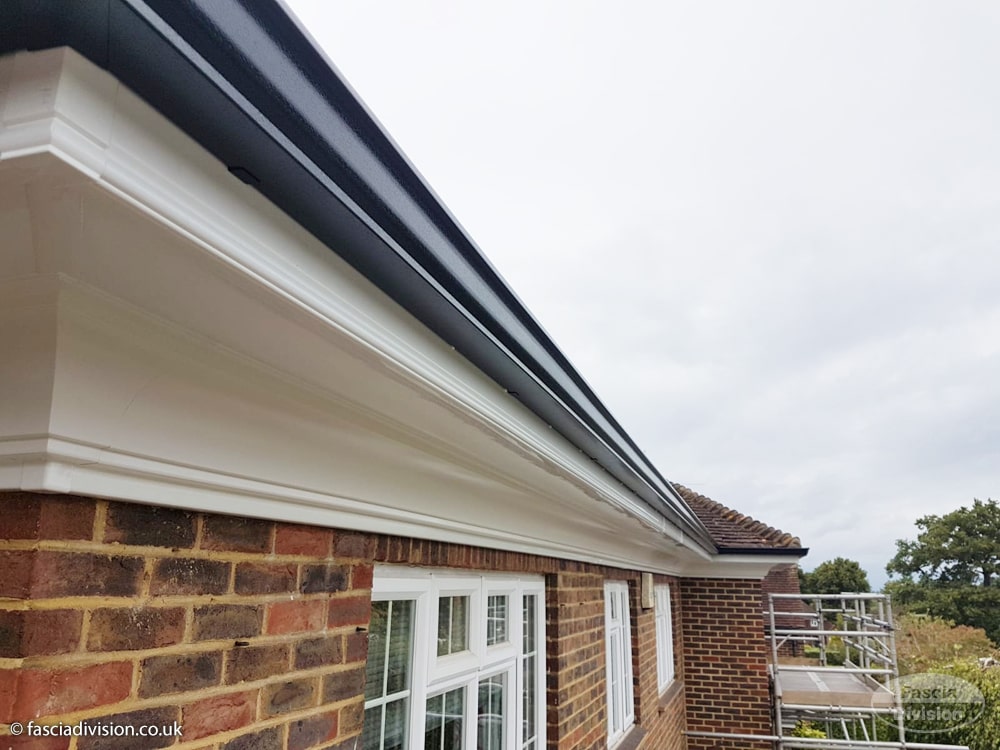
Replacement Soffit Boards
Add a review FollowOverview
-
Founded Date March 14, 1936
-
Posted Jobs 0
-
Viewed 23
Company Description
Fascia Board Repair 10 Things I’d Like To Have Known Earlier
Fascia Board Repair: A Comprehensive Guide
Fascia boards play an essential role in the structural stability of a home. They are the long, straight boards that run along the lower edge of the roof; they serve both practical and visual purposes. With time, fascia boards can suffer from damage due to the aspects, insects, or bad drain systems. This article aims to offer an in-depth understanding of fascia board repair, detailing vital information on identifying damage, repair techniques, and maintenance pointers for house owners.
Comprehending Fascia Boards
Fascia boards are usually made from wood, vinyl, or aluminum. Their primary function is to support the bottom row of roofing system shingles and conceal the rafters, thus supplying a tidy and ended up want to the roofline. Additionally, fascia boards also play a critical function in protecting your home from water damage by helping to direct rainwater far from the house through seamless gutters.

Why Repair Fascia Boards?
Harmed fascia boards can result in a plethora of issues, consisting of:
- Water damage: Allowing moisture to permeate the roofing structure, causing mold and structural decay.
- Pest invasions: Damage can supply entry points for pests like squirrels or pests.
- Aesthetic concerns: Cracked, warped, or peeling fascia can detract from a home’s curb appeal.
Identifying Damage
Before proceeding with repairs, it is essential to identify the condition of your fascia boards. Some typical signs of damage consist of:
- Rotting wood: Often resulting from prolonged exposure to wetness.
- Peeling paint: Indicates wetness invasion or insufficient sealing.
- Fractures or divides: Can take place due to thermal growth or severe weather.
- Sagging or removed boards: May be a sign of structural problems or insects.
Table 1: Common Fascia Board Damage Types
| Damage Type | Description | Trigger |
|---|---|---|
| Decomposing | Soft, spongy texture | Prolonged wetness exposure |
| Peeling Paint | Flaking or blistering paint | Moisture infiltration |
| Fractures | Noticeable fissures | Thermal growth |
| Drooping | Board is not lined up properly | Structural damage |
| Insects | Holes or tunnels in the board | Entry by rodents/insects |
Fascia Board Repair Techniques
Fixing fascia boards involves a number of methods based on the type and extent of damage. Below work techniques for fascia board repair.
1. Minor Damage: DIY Repair
For minor damages, homeowners can frequently manage repairs with basic tools.
Products Needed:
- Wood filler or epoxy
- Paint or sealant
- Sandpaper
- Putty knife
- Guide (if repainting)
Steps:
- Assess Damage: Identify the extent of damage and identify if the entire board needs replacement or if repairs suffice.
- Tidy Area: Remove any debris or loose paint.
- Fill Gaps: Apply wood filler or epoxy to cracks or holes utilizing a putty knife.
- Sand Smooth: Once dry, sand the repaired area to develop a smooth surface.
- Paint/Seal: Apply primer and paint to match the fascia.
2. Considerable Damage: Board Replacement
If a fascia board is significantly damaged, a complete replacement might be required.
Materials Needed:
- New fascia board (wood, vinyl, or aluminum)
- Nails or screws
- Hammer or drill
- Security goggles and gloves
- Primer and paint (if wooden)
Steps:
- Remove Damaged Board: Carefully secure the damaged fascia utilizing a lever or saw, guaranteeing not to disrupt surrounding materials.
- Step and Cut: Measure the brand-new board to the exact same length as the old one and cut appropriately.
- Connect New Board: Position the new fascia board and protect it with nails or screws, ensuring it is flush versus the roofline.
- End up: Paint or seal the brand-new board to protect versus moisture.
3. Professional Help
For extensive damage or house owner unpredictability, hiring a professional contractor may be the best alternative. A qualified contractor can evaluate the scenario accurately and make sure that any repairs or replacements are up to industry standards.
Maintenance Tips for Fascia Boards
To lengthen the life of fascia boards and avoid future damage, think about the following maintenance ideas:
- Regular Inspection: Check fascia boards a minimum of once a year for signs of damage.
- Clean Gutters: Ensure gutters are routinely cleaned up to avoid water from pooling or overruning onto fascia boards.
- Seal and Paint: Apply sealant or paint every couple of years to safeguard wooden fascia boards from moisture.
- Trim Overhanging Branches: Prevent physical damages from falling branches by keeping surrounding trees cut.
FAQ Section
Q1: How typically should I examine my fascia boards?A1: It is suggested to
inspect your fascia boards at least when a year, especially after heavy storms or seasonal modifications. Q2: Can I paint over peeling fascia?A2: Peeling
paint must be scraped off, the area must be sanded, and any underlying damage should be resolved before repainting. Q3: Is it needed to replace the entire fascia board if it’s damaged?A3: Not necessarily; minor damage can frequently be fixed with filler, however substantial damage may require replacement. Q4:
What materials are the best choices for fascia boards?A4: Wood is standard and aesthetically pleasing; however, vinyl and www.repairmywindowsanddoors.Co.uk aluminum are more long lastingand resistant to rot and bugs. Fascia board repair is a necessary element of home maintenance that substantially impacts the overall health of the roofing system and structure. By determining damage early, using reliable repair techniques, and adhering to maintenance suggestions, homeowners can protect their property from costly repairs in the future. Whether selecting DIY approaches or seeking professional aid, comprehending the value of fascia boards and their maintenance is crucial for any property owner.
